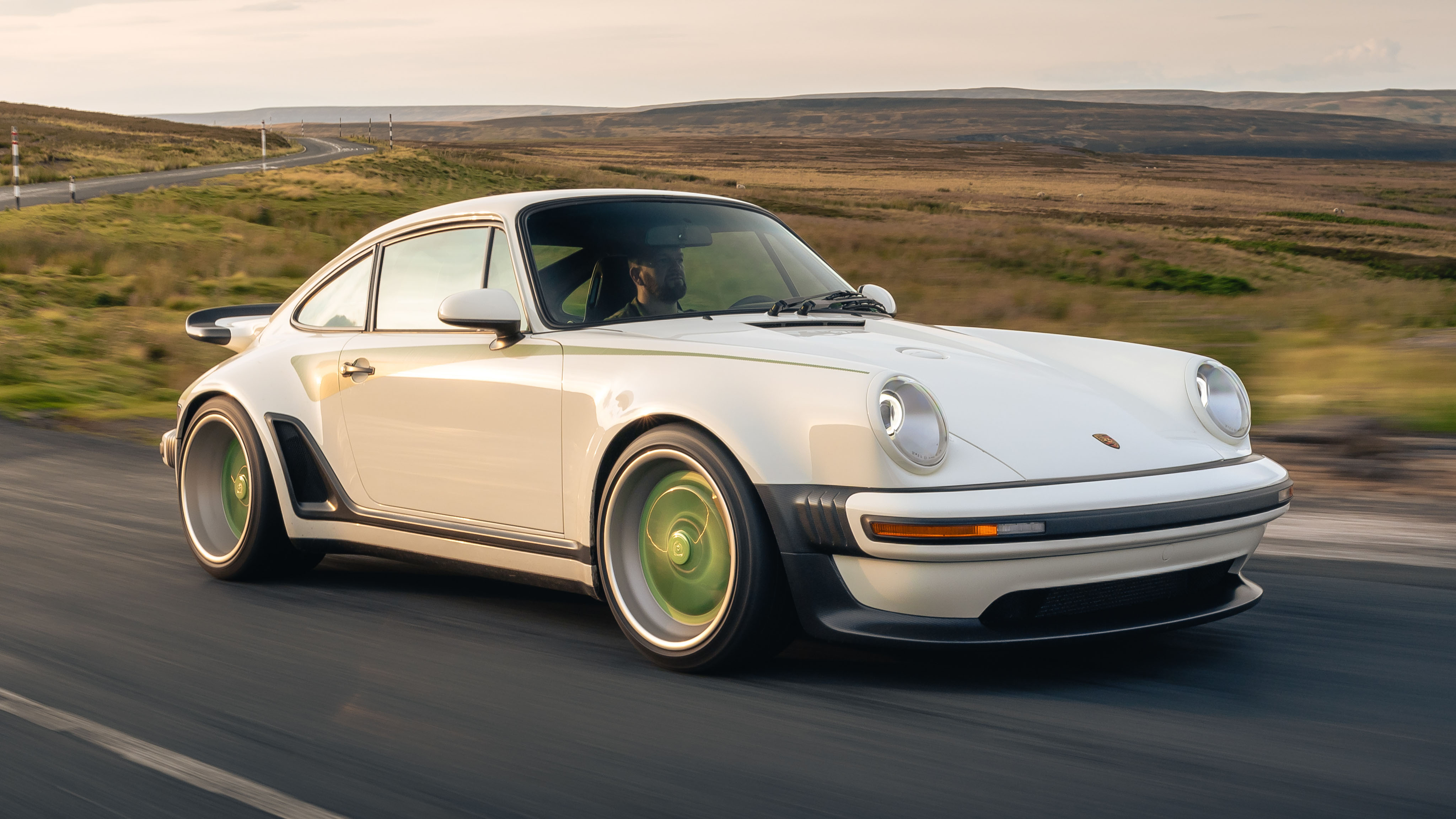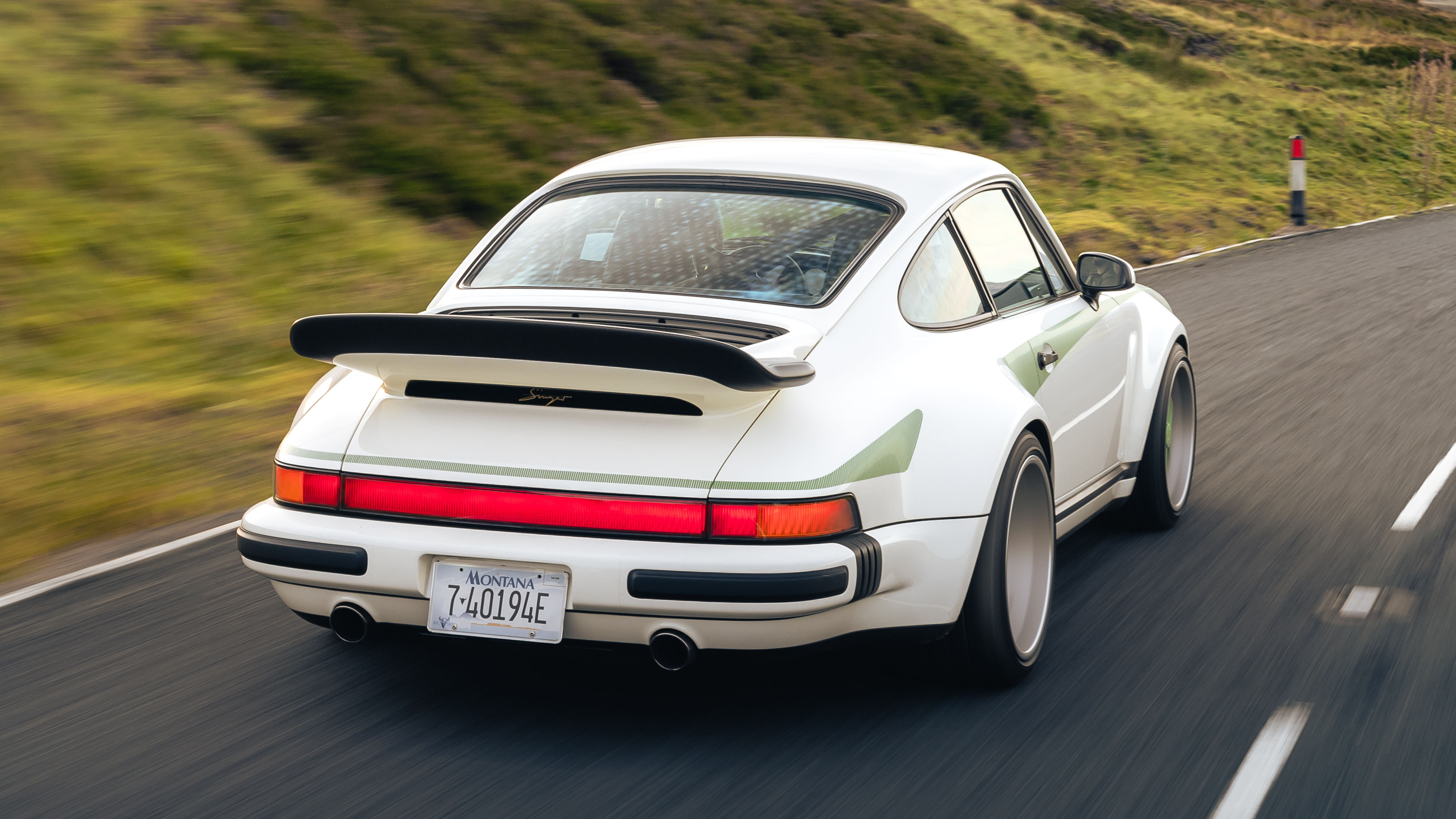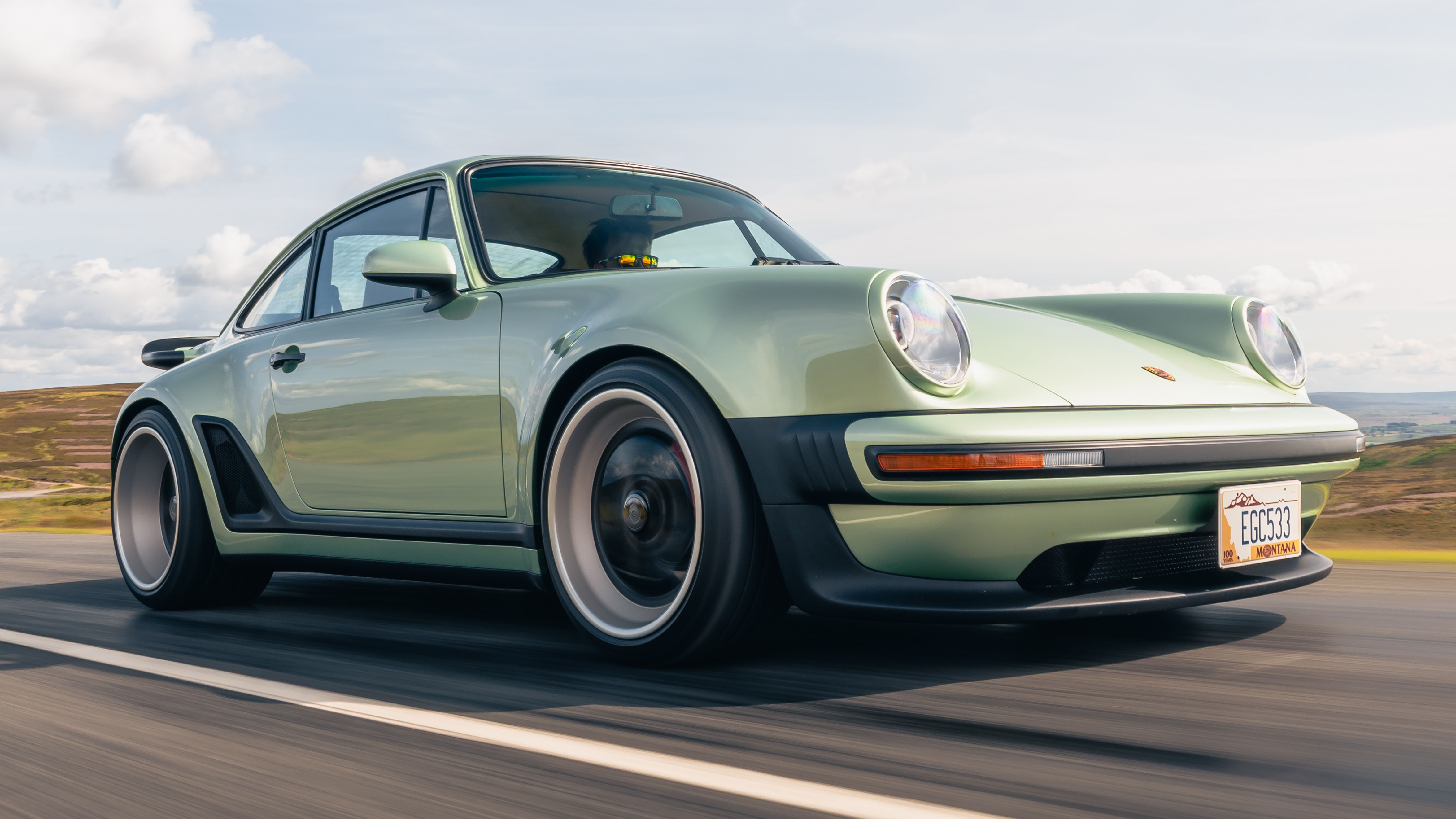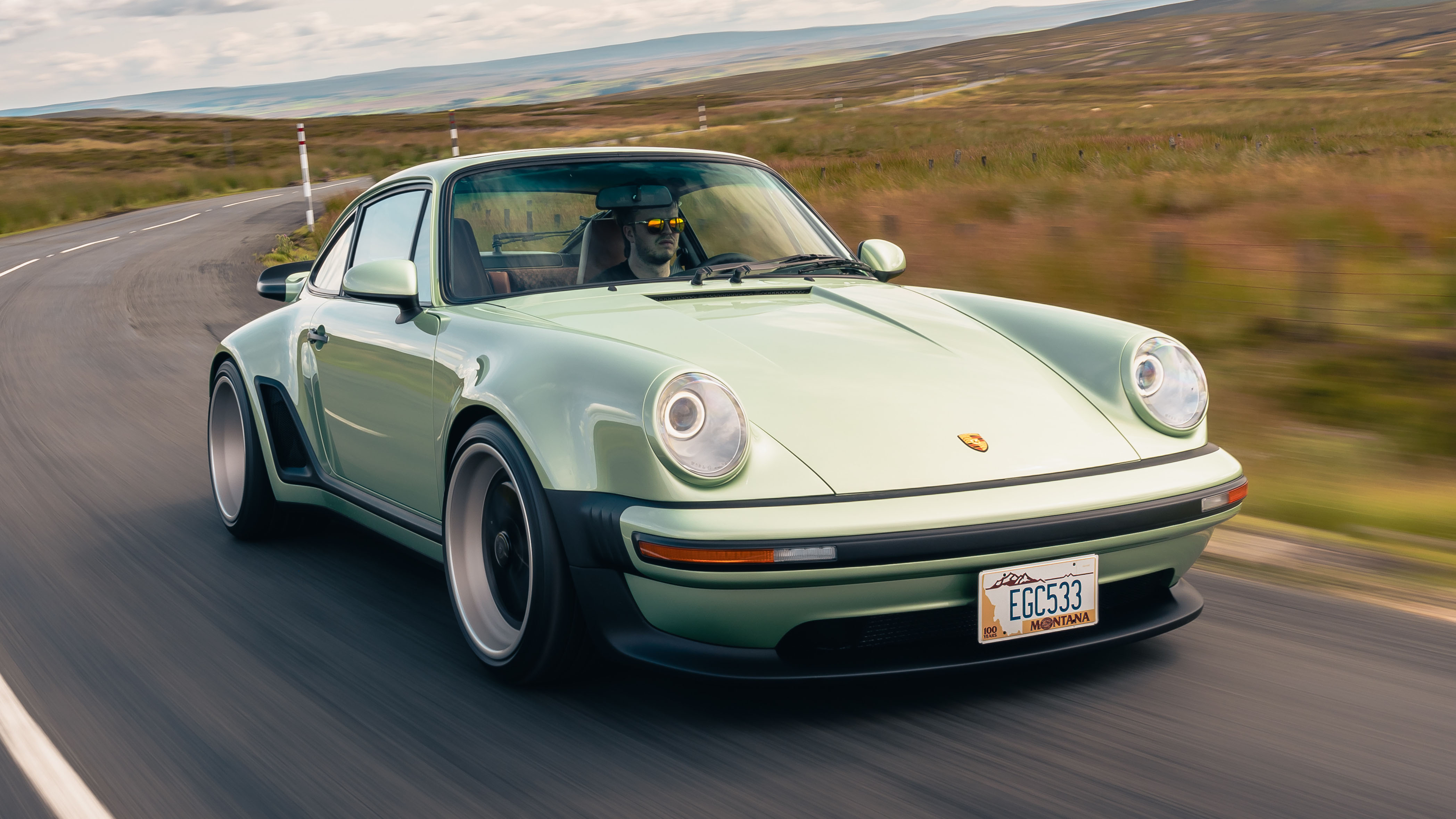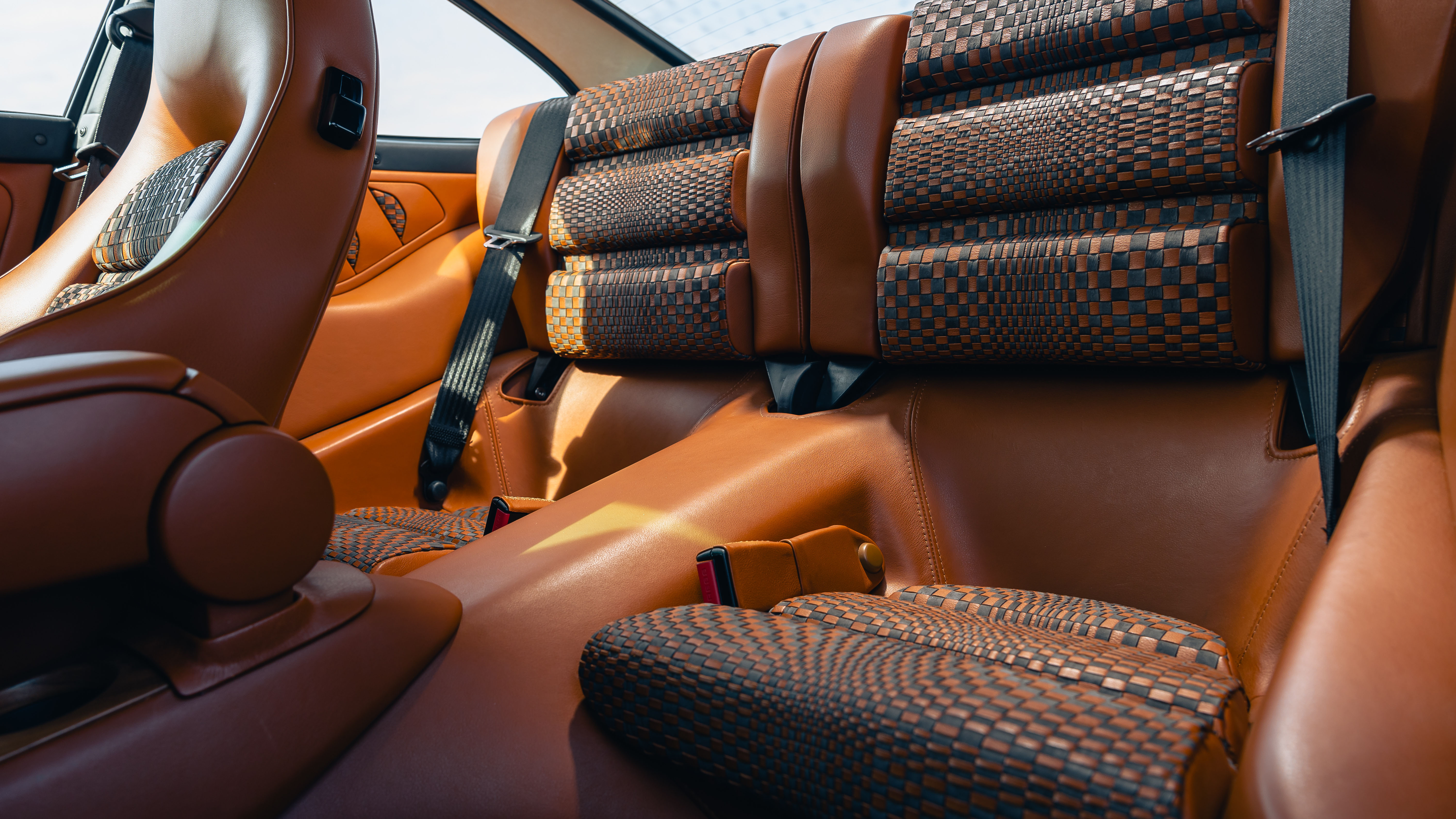
What is it?
Complicated, is what it is. This is a restomod Porsche 911 of the 964 variety, except re-worked by Singer to produce an homage to the legendary 930 Turbo of the mid-Seventies. Yup, just at the half century anniversary of the birth of turbocharged Porsches, Singer presents a gift. And what a thing.
As with the usual Singer template, everything is disassembled and re-made, but better. The bodywork is all carbon - except for the steel doors, to retain a meaty thunk on closure - pretty much every radius and curve changed. And yet you’d be hard pressed to tell unless you had an original to hand. Well, most would.
In the rear is a 3.8-litre bored version of the ‘Mezger’ flat-six, this time sporting a metric tonne of changes, not least a pair of variable-vane Borg-Warner turbos nicked from a 992-era car. Basic spec gets 450bhp, but can be cranked to 510, with about 400lb ft. Stats aren’t official, but you’re looking at late threes 0-62mph according to the TG-patented bum-dyno, mainly because at 12-1,300kg, these aren’t heavy things. Kudos to Singer for not going for an internet-baiting 750bhp just because it could. This is about balance, rather than Top Trumps.
Oh, and they’re all six-speed manuals and rear-wheel drive only. And by crikey, it works.
Photography: Jonny Fleetwood
It’s quite pretty, isn't it?
We understand that taste is subjective, but there are precious few more photogenic cars out there and, in our opinion, most tend to be restomods. Which is something to ponder. But again, this is a wealth of detail wrought on the bones of a 964. You can see the front bumper has all the visual cues of the inspiration, but slicker, tighter and more aerodynamic.
The headlights are LED, but not the glittery multifaceted flash that looks like inappropriate Christmas twinkle. The bumper bellows are now vents, the ‘shark fin’ side elements now intakes for the engine. The iconic rubber whale tail rear spoiler of the original is now carbon, longer and taller, but not set-up for downforce so much as high-speed stability. This is Turbo enhanced rather than unrecognisable - and like the best kind of plastic surgery, you end up knowing that there’s work been done, but pondering exactly what it might be. You know this is a classic, but it looks spectacular.
What are the versions?
Interesting take on the idea of different versions, because essentially every Singer-modified 911 is unique. Mainly because the optioning is almost overwhelming. But Singer itself has produced two different styles of Turbo for press and pictures, and they’re metered to slightly different tastes.
The basics are the same: all Turbos will be either 450/510bhp (unsure as to how many 450bhp cars will be ordered in reality), six-speed manuals and rear-wheel drive. An AWD option was considered, but thought to be unnecessary at this point. The suspension, damping and traction control systems are all the same, as are the settings for set-up.
The white car pictured here is bent slightly more to the occasional trackday, so there’s fixed-back manual carbon buckets and fabric inserts, less sound-deadening and carpet, a half cage and no rear seats, more exposed carbonfibre. It also has a central-fill fuel tank, rear wiper delete and weighs a bit less.
Top Gear
Newsletter
Thank you for subscribing to our newsletter. Look out for your regular round-up of news, reviews and offers in your inbox.
Get all the latest news, reviews and exclusives, direct to your inbox.
The green car is more touring-focussed, so there are electric leather chairs, wood trim, a rear wiper and less fussy front wing fill for the tank. It’s also got proper rear seats - no cage - and more carpet. So you can pretty much just decide to mix’n’match or swing further towards whichever vibe most floats your boat. Both are exceptional in terms of quality and feel.
What’s it like to drive?
Busy. On the northern Pennines where we tested over two days, it quickly became apparent that Singer hasn’t tried to knock too many edges off the 911 experience. On bumpy roads the Turbo feels fidgety and taut. But once you get going, the car starts to work harder, the suspension and damping come alive and it’s largely awesome, and very much not like the original.
It feels like a rally car in that it kind of needs some load going through it to blunt the sharpness. But this is a stiff car with modern suspension kinematics, damping and tyres, and it shows. Grip is consistent and generous, and the Bosch traction control unobtrusive. Switch it into Sport or Track and you get more movement from the back, but it’s never snappy or inconsistent. And don’t try and fight the wheel - like with most era-911s, the steering wheel likes to writhe around in your grip, but if you let it work out the bumps itself, it’s much calmer.
Brakes are DLS-derived, with carbon ceramics for the white car and steel rotors for the green. To be honest, the carbons were pretty much perfect, so if you have the cash, why not?
It also sounds good. Not as operatic as the DLS, but fun. More roar than a particular note, loads of induction noise and the odd electric wastegate twitter. It pops and bangs and crackles, but it’s not the digital fakery of a pop’n’bang map, just fuel and hot exhaust doing their things.
The thing is, this isn’t a cheap thrill of pure speed - you have to drive this car to get the best from it, syncopate hands, feet and brain to get those changes and lines just right. Making this thing swoop through a series of corners might not be the fastest thing in the world, but it’s about 99-times more satisfying than pure power. In a world of cheap electric horsepower, it reminds you of what you really like about driving. It’s a car you pat on the dash after a good drive, and you always, always look back when you park it. Can’t get fairer than that.
Just remember that this isn’t a ‘Singer Porsche’. It’s a Porsche 911 that’s had the Singer treatment, because Singer doesn’t make cars. The reasoning behind that is because Porsche has a ferocious legal department and Singer Vehicle Design is a specialist re-imagineer (sic) that has nothing but absolute respect for the basic ingredients. Singer products are born of a love for Porsches more than anything else - even if, as a company, it tears them back to the atoms and makes them more boutique.
That shows in this car - it’s not the flash, noisy DLS Turbo - but a more considered take. And that makes it endlessly desirable.
How much does all this cost?
Deep breath. This is an £850-ish grand conversion. So that does not include the base 964 (it doesn’t have to be an original Turbo to get the treatment), taxes or shipping from Singer’s home workshop in California. You’ve got to be seriously rich to have one of these. And if you’re wondering whether there’s a market for a car nine or ten times the cost of an unrestored 930 Turbo, an order book of 300+ (according to Singer) and a three-year waiting list pretty much answers that question.
Is it worth it? Well that’s up to you and your bank manager. But we’d say yes.
Featured

Trending this week
- Car Review
BMW 1 Series




